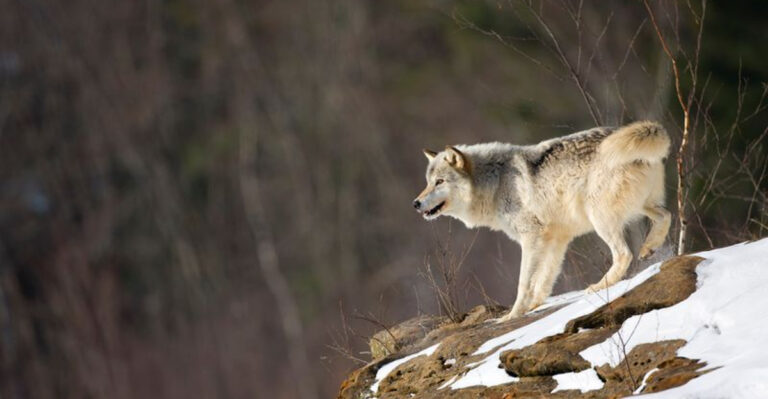15 U.S. States Where Snakebites Are Most Common (And The 5 Most Venomous Snakes)
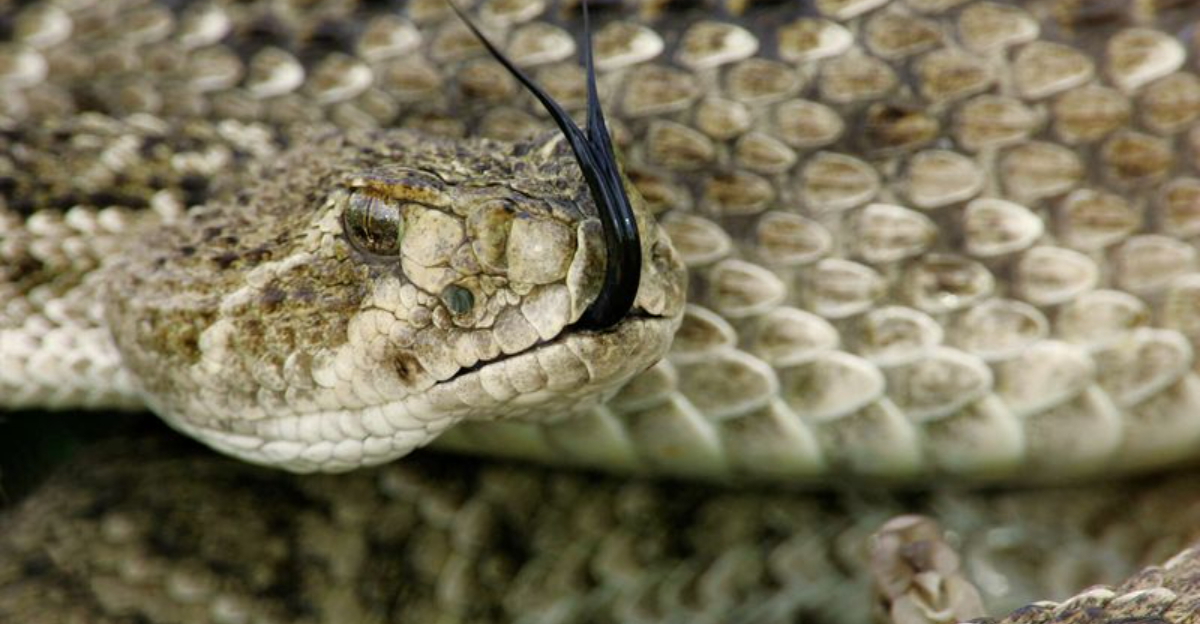
Snakebites may not be common, but they pose a serious risk in certain parts of the U.S. Some states see higher rates of bites due to the abundance of venomous snakes in the area.
From the deadly rattlesnakes of the Southwest to the aggressive cottonmouths of the Southeast, understanding which states have the highest snakebite rates – and the most dangerous snakes – can help keep you informed and safe.
In this article, we’ll explore the 15 U.S. states with the highest snakebite rates and introduce you to 5 of the most venomous snakes that pose a threat.
1. Texas Tops The Charts

Everything’s bigger in Texas – including the number of snake encounters! The Lone Star State consistently records the highest number of snakebite incidents annually, with around 550 reported cases each year. The state’s vast size and diverse habitats create perfect conditions for numerous snake species.
Rural communities and outdoor enthusiasts face the greatest risk, especially during summer months when both humans and snakes are most active. Texas is home to all four venomous snake groups found in the US: rattlesnakes, copperheads, cottonmouths, and coral snakes.
2. Florida’s Serpent Surprise
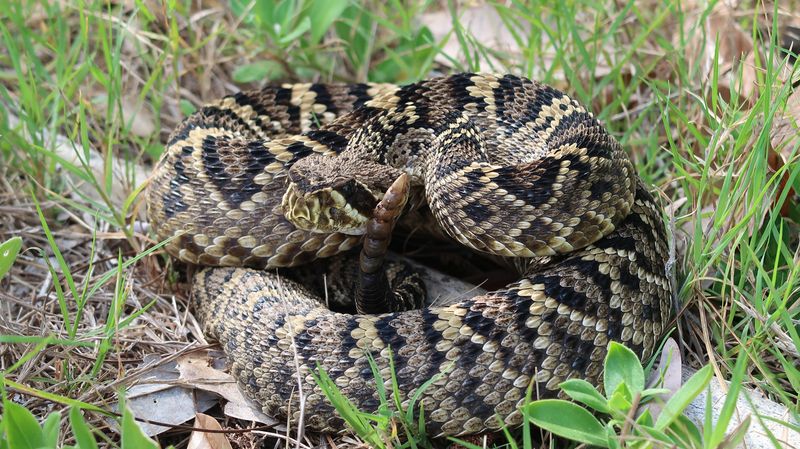
Florida ranks second nationally for snakebites, averaging about 500 cases yearly. The state’s warm, humid climate creates a snake paradise where reptiles thrive year-round. Many bites occur in suburban areas where development pushes into natural habitats.
The eastern diamondback rattlesnake, North America’s largest venomous snake, calls Florida home. Uniquely, Florida also hosts non-native species like Burmese pythons that have established themselves in the Everglades. While pythons aren’t venomous, their presence highlights how snake-friendly Florida’s environment truly is.
3. Georgia’s Snake Hotspot
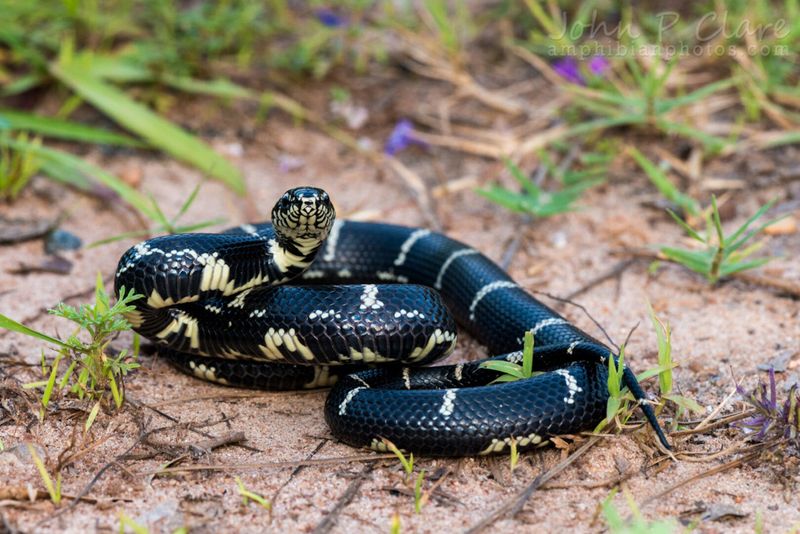
Georgia reports approximately 400 venomous snakebites annually, placing it third nationally. The state’s diverse geography – from mountains to coastal plains – supports six venomous snake species that thrive in various habitats. Timber rattlesnakes and copperheads account for most bites.
Gardening and hiking lead to many snake encounters in Georgia. The state’s mild climate means snakes remain active for much of the year. Rural south Georgia counties typically report higher bite rates than northern regions.
Most bites happen between April and October when people and snakes are most active outdoors.
4. North Carolina’s Surprising Statistics
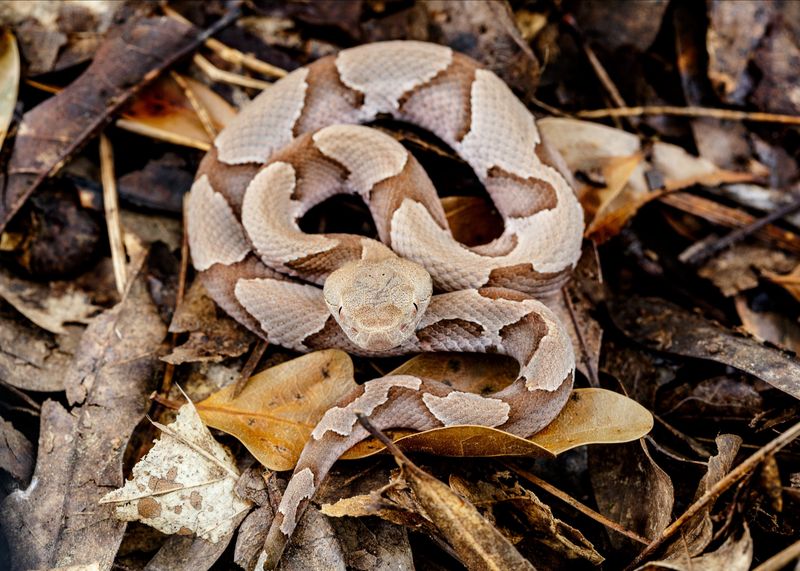
North Carolina ranks fourth for snakebites with approximately 350 reported cases yearly. The state’s diverse landscape from mountains to coastline creates habitats for copperheads, cottonmouths, and three rattlesnake species. Copperheads cause nearly 90% of venomous bites here.
Many bites occur in suburban areas as development expands into formerly wild spaces. Weekend yard work in spring and fall leads to numerous encounters. North Carolina’s poison control center handles thousands of snake-related calls annually.
Interestingly, the state’s snakebite rates have increased over the past decade as more people move to previously undeveloped areas.
5. Arizona’s Desert Dangers
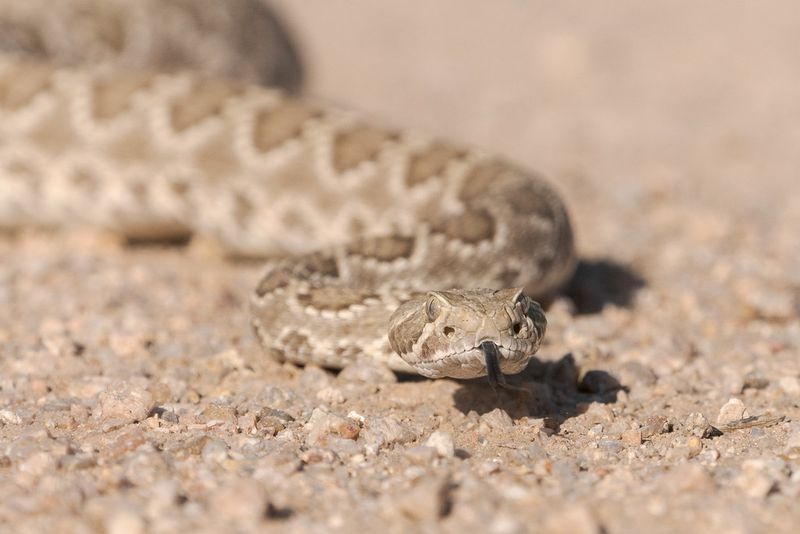
Arizona reports roughly 300 venomous snakebites yearly, with most involving rattlesnakes. The Sonoran Desert houses 13 rattlesnake species – more than any comparable region worldwide! Hikers, rock climbers, and golfers frequently encounter these reptiles on trails and courses.
The Mojave rattlesnake, found in western Arizona, delivers particularly dangerous venom that can cause neurological symptoms. Many bites happen when people accidentally step on or near camouflaged snakes.
Arizona’s poison centers have developed specialized protocols for treating the unique venoms of the state’s diverse rattlesnake population. Summer monsoon season drives increased snake activity.
6. California’s Coastal Concerns
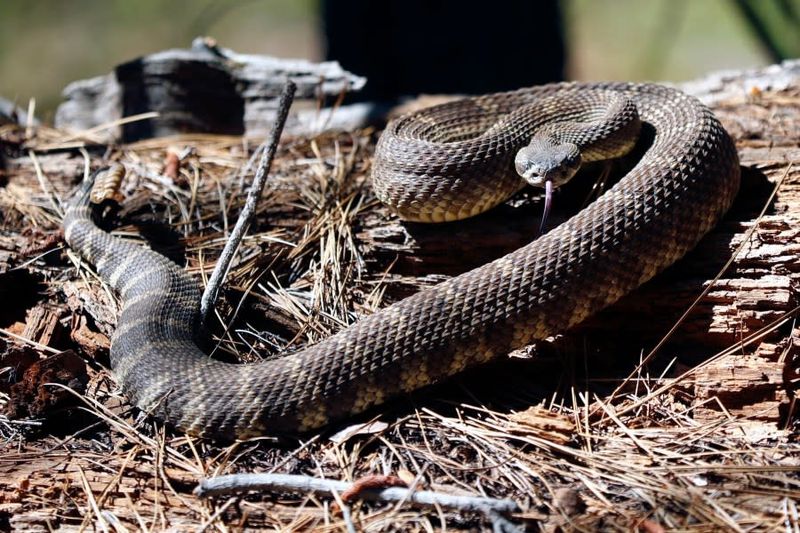
California averages approximately 300 venomous snakebites annually despite its large population. The Golden State hosts seven rattlesnake species, with the Western Diamondback and Northern Pacific Rattlesnake causing most bites.
Many encounters occur during hiking and camping trips in national parks. Southern California’s year-round warm climate keeps snakes active longer than in other regions. Spring brings particular danger as snakes emerge from winter dormancy hungry and more aggressive.
Urban sprawl into canyon areas has increased human-snake interactions around Los Angeles and San Diego. California’s varied geography creates diverse snake habitats from desert to mountain regions.
7. Alabama’s Underestimated Risk
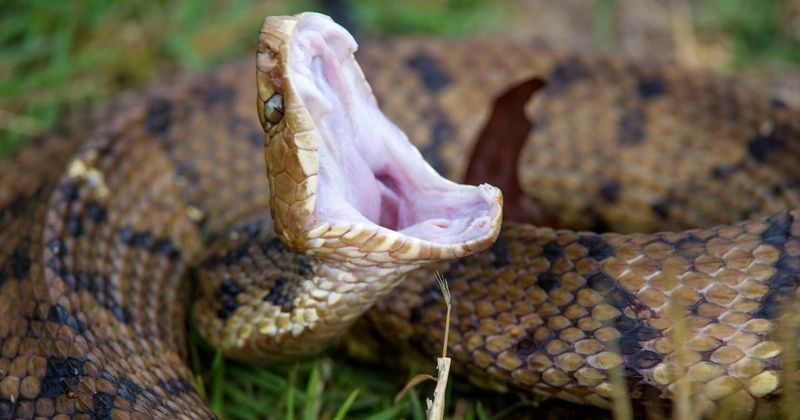
Alabama records approximately 250 venomous snakebites yearly – a surprisingly high number given its population size. The state’s warm climate and abundant forests, swamps, and waterways create ideal snake habitats throughout much of the year.
Cottonmouths (water moccasins) cause many bites near lakes and rivers where people fish or swim. Alabama’s six venomous snake species include the rare Eastern Diamondback rattlesnake, which can deliver potentially fatal bites.
Rural areas report most incidents, often involving agricultural workers. The state’s mild winters mean snakes remain active longer than in northern regions, extending the risk period.
8. South Carolina’s Slithering Situation
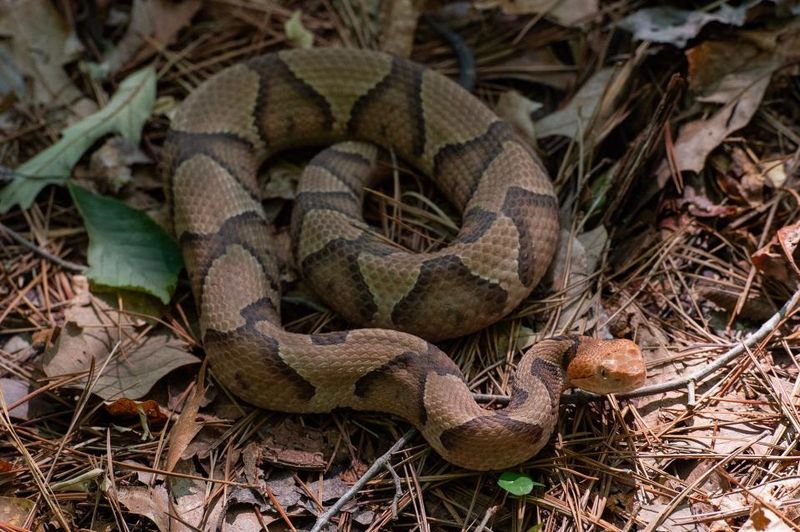
South Carolina reports roughly 250 venomous snakebites each year. The Palmetto State’s humid subtropical climate creates perfect conditions for snakes, especially in coastal and lowland areas. Copperheads cause most bites, particularly in suburban neighborhoods where they hide in leaf piles and garden beds.
Barrier islands along the coast host large populations of dangerous Eastern Diamondback rattlesnakes. Many bites occur during yard work or while walking dogs in the evening when snakes are active but harder to spot.
Interestingly, South Carolina has seen increasing snakebite rates in growing suburban areas where development disrupts snake habitats.
9. Oklahoma’s Prairie Peril

Oklahoma records approximately 200 venomous snakebites annually. The state’s varied landscape of prairies, forests, and mountains harbors seven venomous snake species. Western Diamondback rattlesnakes cause most serious envenomations, especially in the drier western regions.
Many bites occur during agricultural work or outdoor recreation. The state’s hot summers drive increased snake activity as reptiles seek shade and water sources, often bringing them into contact with humans.
Oklahoma’s rural nature means some bite victims face longer travel times to medical facilities with antivenom. Ranchers and farmers face particular risk while working around barns and equipment where snakes may hide.
10. Louisiana’s Bayou Biters
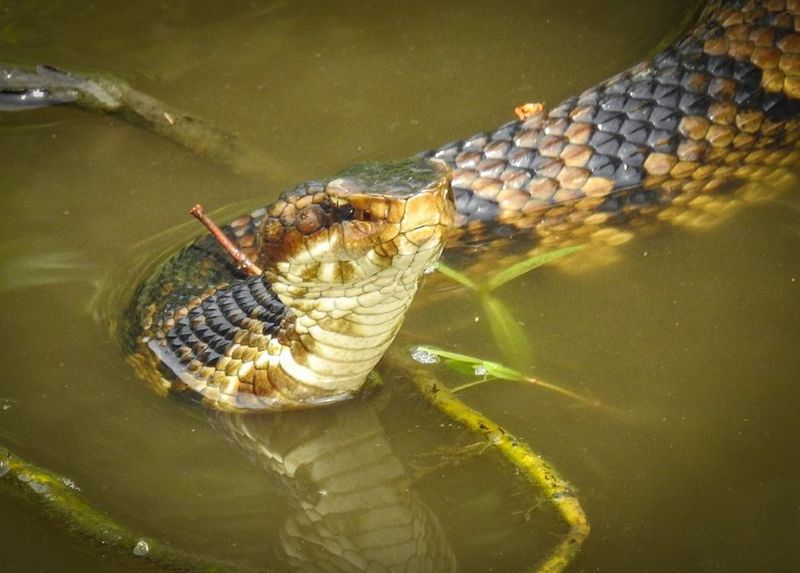
Louisiana reports approximately 200 venomous snakebites yearly. The state’s extensive wetlands and bayous create perfect habitats for water moccasins (cottonmouths), which cause many bites. These aggressive snakes don’t flee when confronted, increasing danger for fishermen and boaters.
Cane fields and rice paddies harbor numerous venomous snakes that encounter agricultural workers. Hurricane flooding often displaces snakes into residential areas, temporarily increasing bite risks.
Louisiana’s year-round warm, humid climate means snakes remain active through most seasons. The state’s rural healthcare challenges sometimes delay treatment for bite victims in remote parishes.
11. Mississippi’s Hidden Danger

Mississippi records approximately 200 venomous snakebites annually. The state’s abundant waterways, forests, and agricultural lands create diverse snake habitats. Many bites occur during fishing and hunting activities when people accidentally step on or near camouflaged snakes.
Copperheads cause most bites, but cottonmouths deliver more severe envenomations. Mississippi’s long growing season means farm workers face extended risk periods while tending crops.
Rural counties report higher bite rates, often correlating with occupational exposure. The state’s high humidity and ample rainfall create lush vegetation where snakes can easily hide, increasing accidental encounters during outdoor activities.
12. Tennessee’s Mountain Menace

Tennessee reports approximately 150 venomous snakebites yearly. The state’s diverse geography from mountains to river valleys supports various snake species. Copperheads cause most bites, especially in the forested eastern regions where hikers and campers encounter them on trails.
The Great Smoky Mountains harbor timber rattlesnakes that deliver potent venom. Many bites occur during yard work in suburban areas, particularly when moving woodpiles or landscaping materials.
Tennessee’s growing outdoor tourism industry has increased human-snake encounters in natural areas. The state’s poison center has developed specialized protocols for the unique venoms of regional snake species.
13. Arkansas’s Ozark Issue
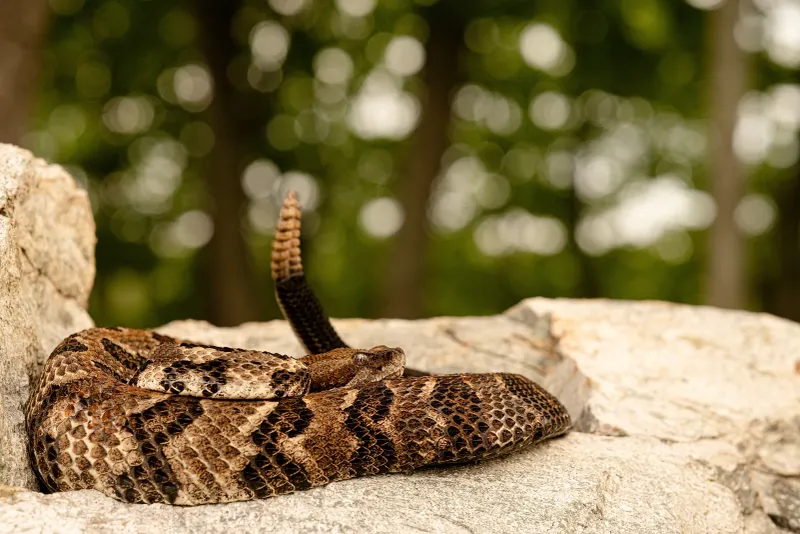
Arkansas records approximately 150 venomous snakebites annually. The state’s diverse habitats from Ozark highlands to delta lowlands support six venomous snake species. Timber rattlesnakes and copperheads cause most bites in the mountainous regions.
Many encounters occur during hiking, camping, and rock climbing in state and national parks. Arkansas’s agricultural communities face occupational risks while working crops and livestock.
The state’s numerous lakes and rivers harbor cottonmouths that frequently encounter fishermen and boaters. Arkansas’s relatively rural population means some bite victims must travel significant distances to reach medical facilities with appropriate antivenom supplies.
14. Virginia’s Appalachian Ambushers
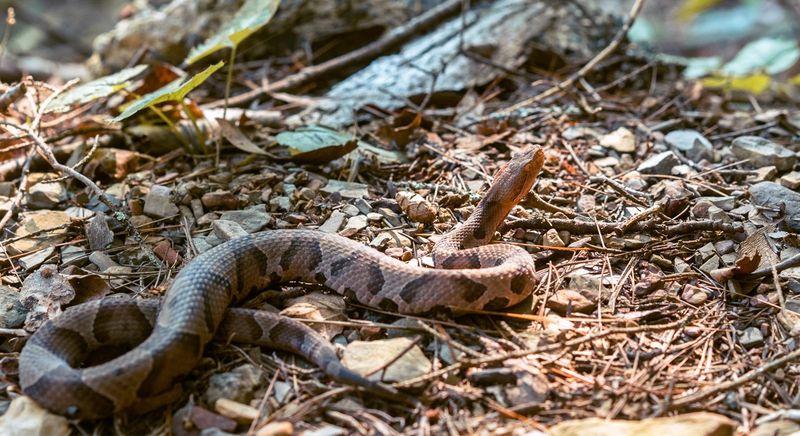
Virginia reports approximately 150 venomous snakebites yearly. The state’s geographic diversity from coastal plains to Appalachian highlands creates varied snake habitats. Northern copperheads cause most bites, particularly in suburban areas around Washington D.C. and Richmond.
The Blue Ridge Mountains harbor timber rattlesnakes that occasionally bite hikers on popular trails. Many encounters occur during gardening and yard work when snakes hiding in vegetation are disturbed.
Virginia’s growing suburbs increasingly encroach on snake territories, leading to more human-snake interactions. The state has seen increasing bite numbers in recent years as outdoor recreation grows more popular.
15. Missouri’s Midwest Mystery
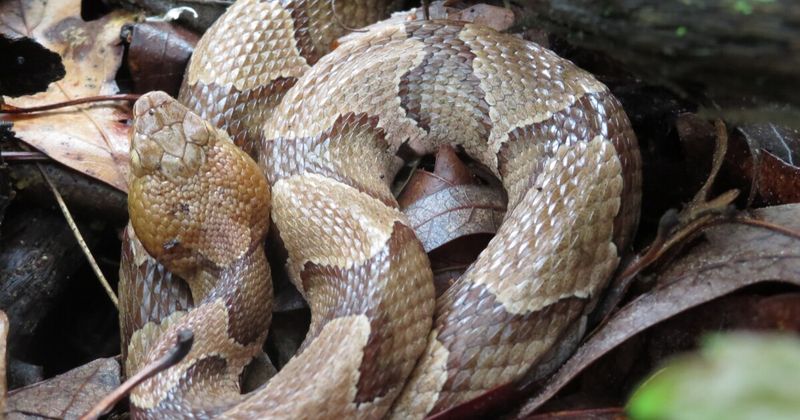
Missouri records approximately 100 venomous snakebites annually – a surprisingly high number for a midwestern state. The state’s diverse landscape of forests, prairies, and Ozark highlands supports five venomous snake species. Copperheads cause most bites, especially in the southern regions.
Many encounters occur during hiking in state parks or while clearing brush on rural properties. Missouri’s extensive cave systems harbor endangered timber rattlesnakes that occasionally bite spelunkers and rock climbers.
The state’s agricultural communities face occupational risks while working around barns and equipment where snakes seek shelter. Missouri’s bite numbers have remained relatively stable despite increasing outdoor recreation participation.
16. Eastern Diamondback Rattlesnake: A Rattlesnake With A Lethal Bite
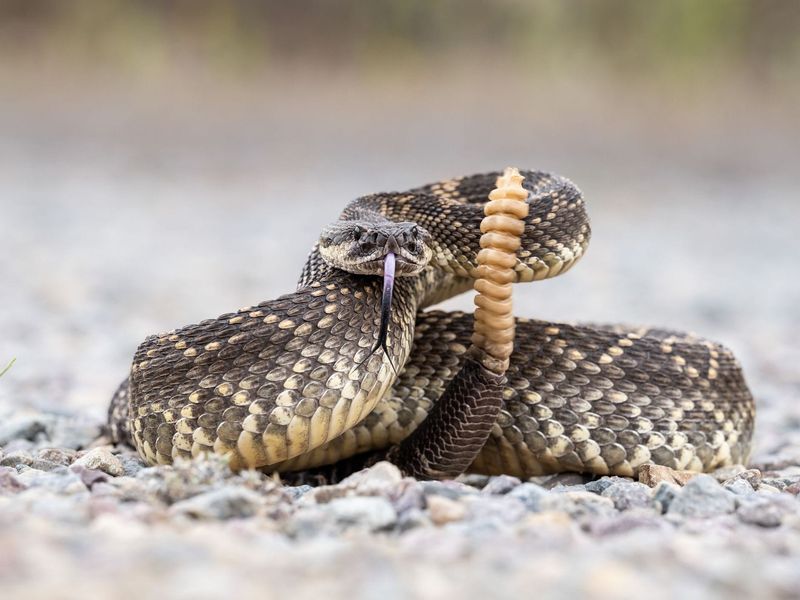
As the largest venomous snake in the Americas, the Eastern diamondback rattlesnake can grow up to 8 feet long and deliver a venom yield of 400–450 mg per bite.
Its venom contains over 100 different toxins, leading to severe hemorrhaging and potential cardiac issues. Fatalities are possible if untreated, with mortality rates ranging from 10% to 20%
17. Mojave Rattlesnake: The Silent Predator Of The Desert
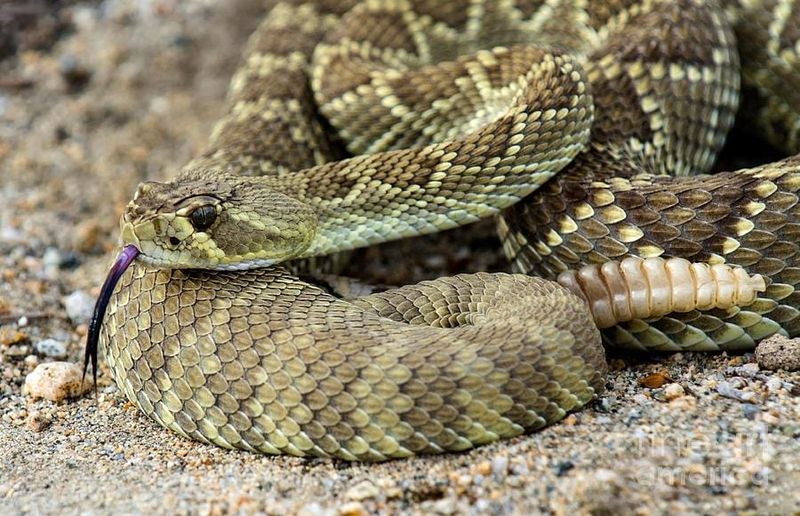
Known for its potent neurotoxic venom, the Mojave rattlesnake can deliver 50–150 mg of venom per bite. Its venom contains “Mojave toxin,” which can cause delayed respiratory paralysis.
The snake’s venom yield and toxicity make it one of the most dangerous rattlesnakes in the U.S.
18. Eastern Coral Snake: The Hidden Danger In Bright Colors
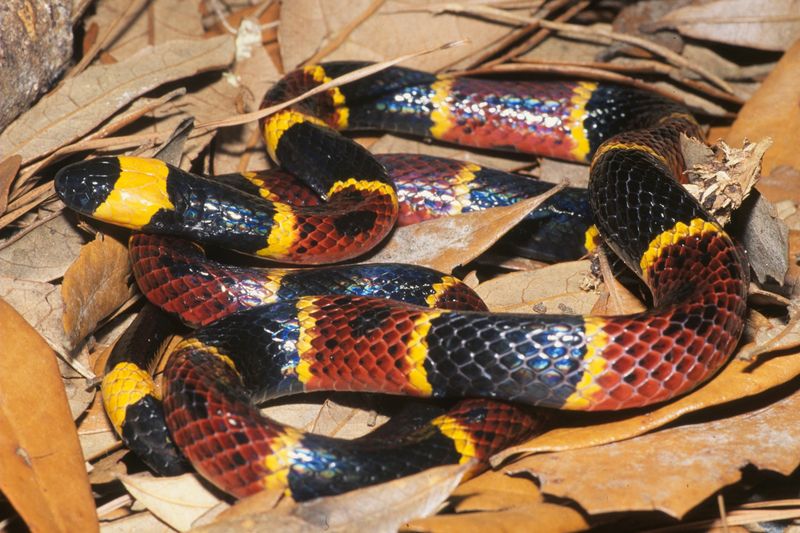
Despite its small size, the Eastern coral snake possesses highly toxic venom capable of shutting down the nervous system.
Bites are rare but can be fatal if not treated promptly. The snake’s shy nature and reluctance to bite humans contribute to its lower incidence of envenomation.
19. Western Diamondback Rattlesnake: The Western Wanderer

The Western Diamondback Rattlesnake is known for its distinctive diamond-shaped patterns along its back. Found primarily in the arid deserts of the southwestern United States, this snake is both feared and respected. Its rattling sound is a clear warning to any potential threat.
With a potent venom, a bite can be serious, but fatalities are rare with proper medical treatment. This species is crucial to the ecosystem, controlling the rodent population.
Interestingly, the Western Diamondback has a reputation for being more aggressive than other rattlesnakes, often standing its ground when threatened.
20. Cottonmouth: The Swamp’s Spine-Chiller
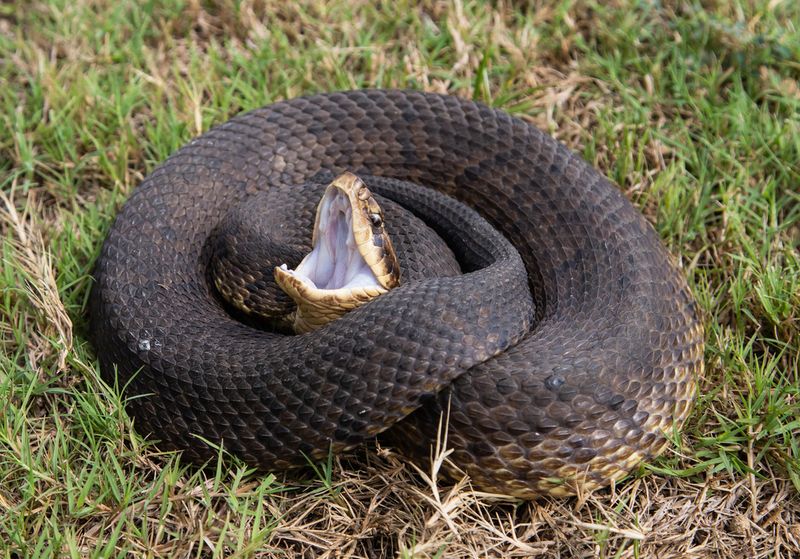
The Cottonmouth, often called the Water Moccasin, thrives in the southeastern United States’ swampy regions. It’s well-known for its defensive display, often opening its mouth wide to show the stark white interior, a tactic to scare off predators.
While its bite can be dangerous, fatalities are rare due to accessible antivenoms. This snake plays a vital role in controlling fish and amphibian populations.
Myth and fear surround the Cottonmouth, with tales of them chasing humans, though these are largely exaggerated. They prefer to avoid confrontation when given the chance.






